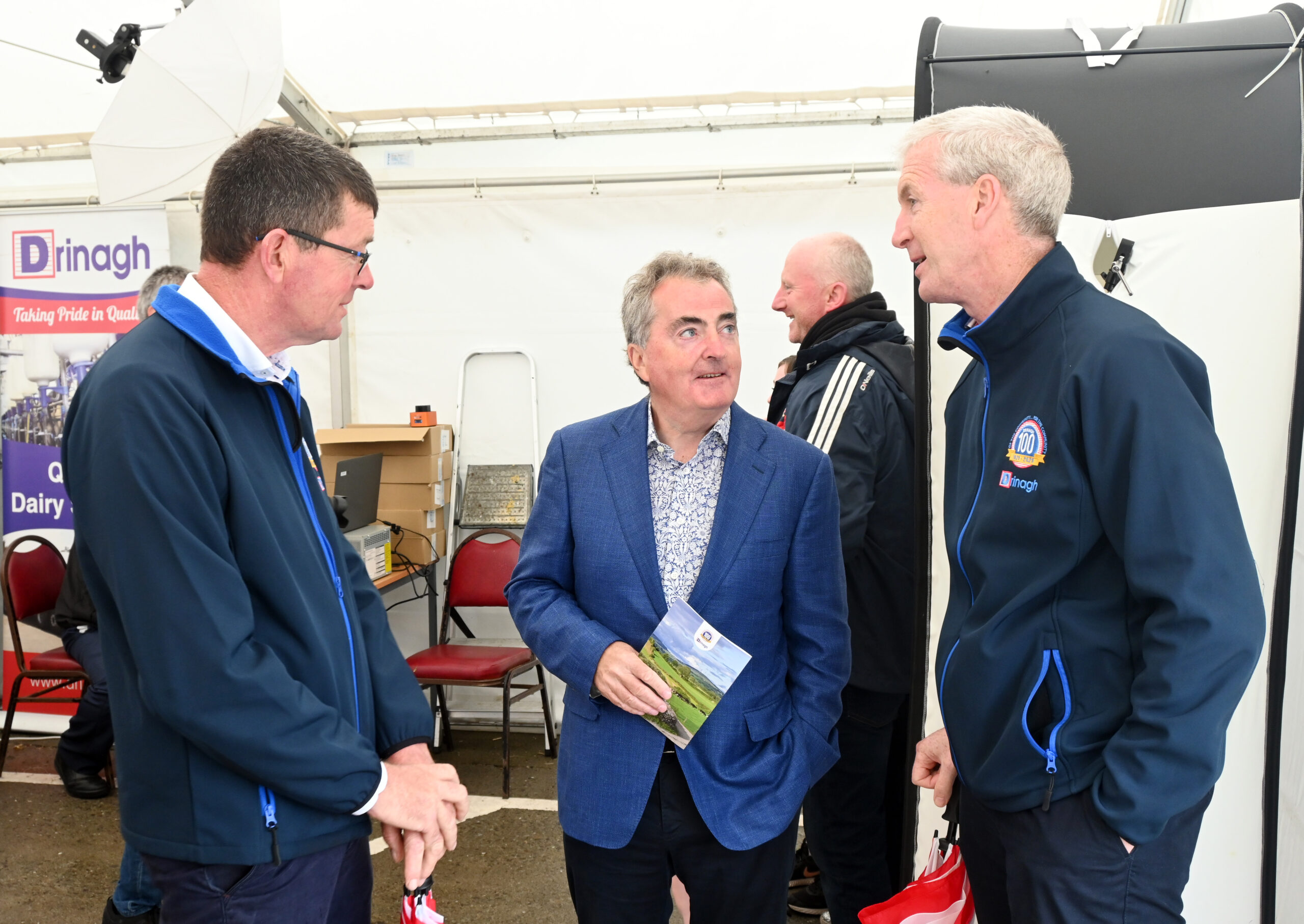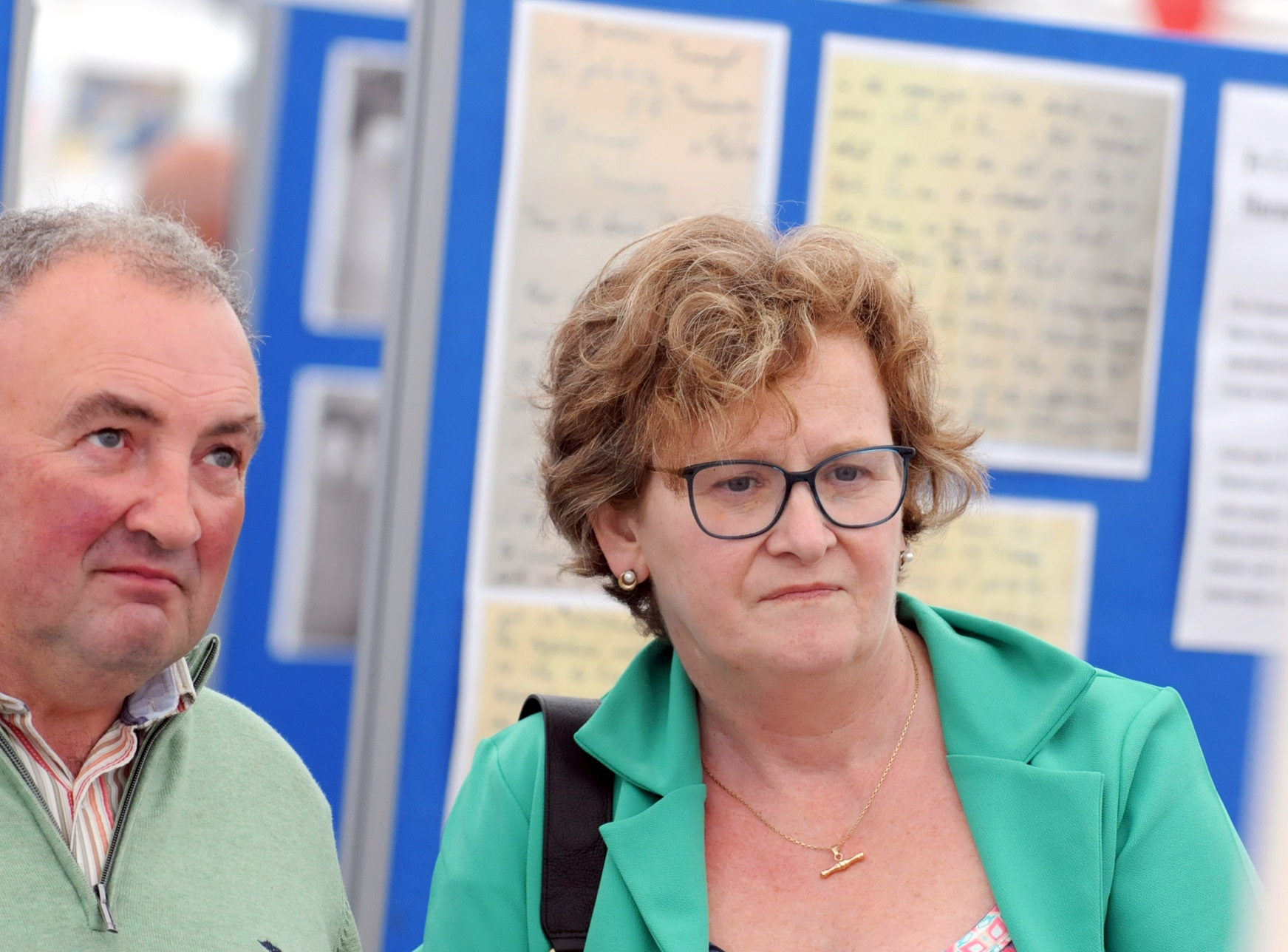Drinagh Centenary Year Celebrations

ICOS member Drinagh Co-op is celebrating its centenary this year and has already had a number of hugely successful events to mark the milestone. Drinagh Co-operative Creamery Ltd was founded in 1923 with its primary business being the manufacture and sale of butter. Situated in what was then one of the most disadvantaged areas of the country, from the outset Drinagh defied the odds and exceeded all expectations. The founding of the Society sparked an economic and social revolution in west Carbery.
In 1923 Ireland was just emerging from a period of extraordinary turmoil which culminated in the War of Independence and Civil War. Ireland was still a rural, peasant society. Poverty was endemic and emigration was a blight on the fabric of rural Ireland. The agricultural industry was practically the only one existing. Butter and eggs were among the new Free State’s chief national assets. However, the dairy industry was in crisis. One of the responses to this was the introduction of a properly regulated creamery system into Ireland.

(Photo: Philip O’Regan, Drinagh)
Fr John Crowley was the driving force behind the founding of the co-operative creamery in Drinagh, but he didn’t labour on his own. In particular, the members of the first committee of management were all very active in the affairs of the Society in the early years.
The members of the first committee of management in Drinagh were pioneers in every sense of the word. The ethos and spirit of co-operation were central to their thinking. Their legacy is an enormous one. Successive management committees/boards of directors have continued that spirit of enterprise and co-operation down through the decades. The contribution that Drinagh has made to the economy and life in west Carbery over the past century is incalculable.

(Photo: Philip O’Regan, Drinagh)
Having been established initially to serve farmers living or farming within seven miles of the Catholic church in Drinagh, the Society quickly expanded and by 1930 it had six auxiliary creameries opened and had a substantial store and egg buying business.
In 1932 Drinagh purchased a small crushing and grinding mill and continued to expand its creamery network and by the end of the decade had opened a further nine branches and had grown to a level scarcely imaginable by its founders.
In 1956 Drinagh had a turnover of £1 million and was only the fourth co-operative in the country to achieve that milestone.
In 1957 the name of the Society was changed to ‘Drinagh Co-operative Limited’ by deleting the word ‘creamery’ from its designation. This was to reflect more accurately the changing nature of the business as it evolved into a more multi-purpose co-op. In 1960 Drinagh had a staff of 166 and was one of the largest employers of labour west of Cork City.

(Photo: Philip O’Regan, Drinagh)
In 1965, Drinagh played a key role in the establishment of Carbery Milk Products which was a joint venture between the four west Cork creamery co-ops and Express Dairies, UK. In 1992 Carbery became fully owned by the four west Cork co-ops with Drinagh being the largest shareholder with a 39% share.
In the 1970s two events occurred which were to have a huge impact on Drinagh. In 1973 Ireland became a member of the European Economic Community (EEC), later the EU, and in 1975 the Society acquired the Aughadown Creameries Group and Castletownbere creamery from the Dairy Disposal Company. This acquisition added a further 11 branches to Drinagh’s network to bring the total up to 29.

(Photo: Philip O’Regan, Drinagh)
Diversification of the milk industry brought great change from the 1970s. Separation of milk at the branches ceased and all milk was transported directly to Carbery. Drinagh ceased their butter making operation at Central in 2000. Most of the activity at Central is now centred on the mill which has grown exponentially over the past few decades. The latest extension in 2018 enabled the mill to double its annual output.
Drinagh is now a large multi-purpose co-op with 15 retail outlets, including four pharmacies in Skibbereen, Dunmanway, Bantry and Schull. It has over 2,000 shareholders and collects some 218 million litres of milk annually from 530 suppliers. In 2022 Drinagh had a turnover of €237.3 million and employed close to 300 people.
Drinagh has contributed an extraordinary amount to the economic and social life in west Carbery over the past 100 years. It is a co-operative in the truest sense of the word – it is of the community and it is for the community. Whatever challenges the dairy industry will face in the next decades, and they will be many and varied, Drinagh is in a strong position to lead the way for its shareholders and the community in west Carbery.

(Photo: Philip O’Regan, Drinagh)
In late July over 3,000 people attended two open family days at its headquarters in west Cork
The Drinagh 100 exhibition of photographs and memorabilia was the main attraction. A collection of hundreds of photographs, letters and documents chronicled the story of Drinagh from its inception.
Another great attraction over the weekend was the guided tour of Drinagh’s state-of-the-art feed mill, which produces over 80,000 tonnes of feed annually. There was a large collection of vintage tractors, trucks and other farm machinery. A 1952 Foden truck, one of four that Drinagh owned in the early 1950s, was one of the main attractions in that display.
There were displays of butter making by the Cork Butter Museum and by Alan and Valerie Kingston from Glenilen Farm, Drimoleague. An information booklet with a brief account of the history of Drinagh was given to every visitor over the weekend.
Meanwhile a comprehensive history of Drinagh will be published in late October. The book, which has been written by Philip O’Regan, chronicles the extraordinary story of Drinagh. The story of how the co-op came to be established at all is a compelling one and the development of west Carbery is intrinsically linked to the evolution of Drinagh over the past 100 years.